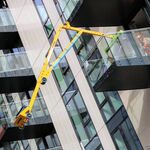Urban Sky
Senior Member
I acknowledge that we all do mistakes, but I would appreciate if you would next time at least consider that something might be wrong with your post when someone seemingly struggles to identify any link between what you quoted and what you wrote and maybe even have a quick glance over the post in question before you write two more posts which just add to the confusion as nobody would know what you are talking about by simply reading your post:This person claims that they retiring the LRC's early as an excuse not to restore service and to help privatize VIA.
Other people on this and other boards have made similar comments about the privatization of VIA in the corridor.
Considering we don't really know how that's going to pan out, I don't see where these assumptions are coming from.
You seem to believe that railroads in this country have the certification power to decide when a new type of trainset can transport revenue passengers…Is there no way to put that first train into service now? Has it officially been accepted by VIA?
Last edited:





